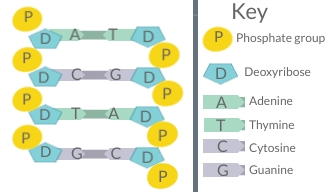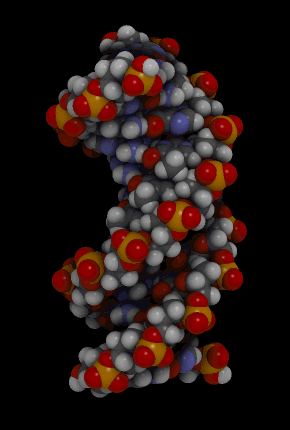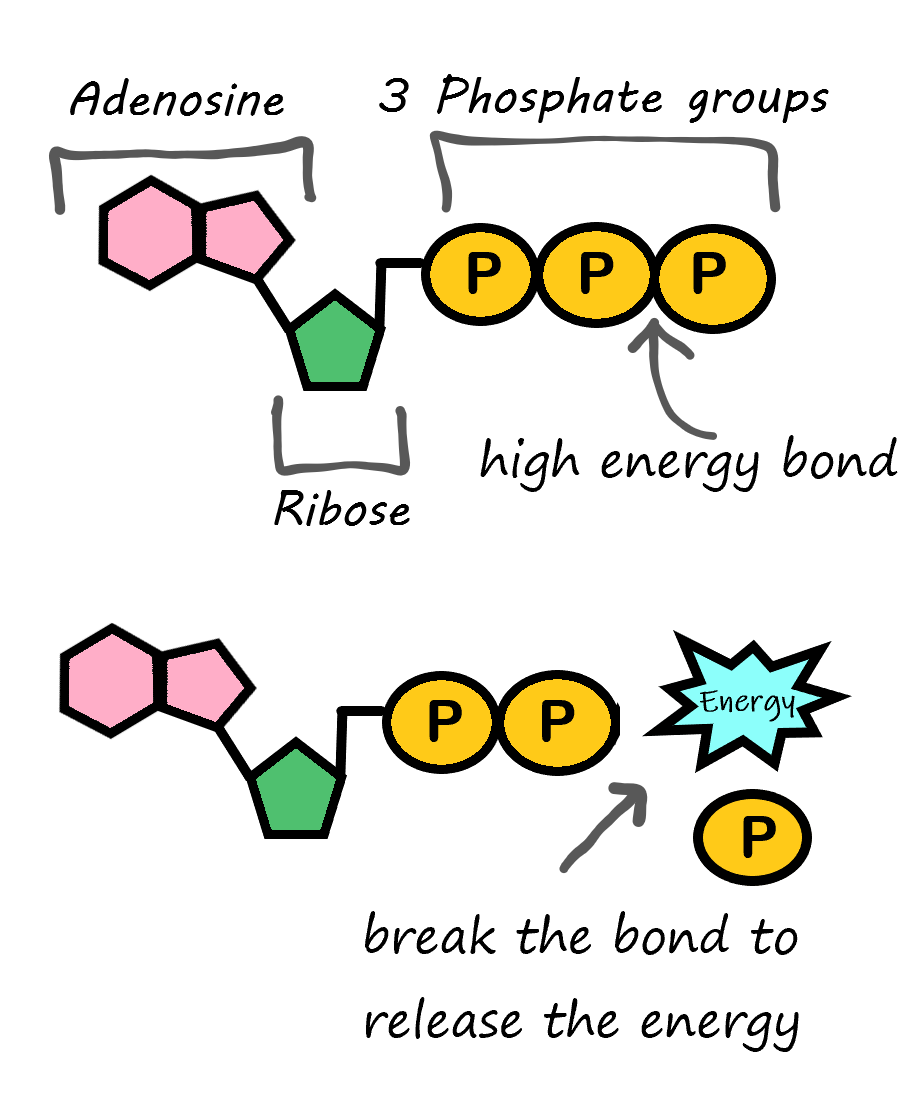Chapter 3 – Biological Molecules
3.9 Nucleic Acids
Created by: CK-12/Adapted by Christine Miller
Who’s Who?
Figure 3.7.1 Identical twins show clearly the importance of genes in making us who we are. Genes would not be possible without nucleic acids.
What Are Nucleic Acids?
Nucleic acids are the class of biochemical compounds that includes DNA and RNA. These molecules are built of small monomers called nucleotides. Many nucleotides bind together to form a chain called a polynucleotide. The nucleic acid DNA (deoxyribonucleic acid) consists of two polynucleotide chains or strands. Thus, DNA is sometimes called double-stranded. The nucleic acid RNA (ribonucleic acid) consists of just one polynucleotide chain or strand, so RNA is sometimes called single-stranded.
Structure of Nucleic Acids
Each nucleotide consists of three smaller molecules:
- A sugar molecule (the sugar deoxyribose in DNA and the sugar ribose in RNA)
- A phosphate group
- A nitrogen base
The nitrogen bases in a nucleic acid stick out from the backbone. There are four different nitrogen bases: cytosine, adenine, guanine, and either thymine (in DNA) or uracil (in RNA). In DNA, bonds form between bases on the two nucleotide chains and hold the chains together. Each type of base binds with just one other type of base: cytosine always binds with guanine, and adenine always binds with thymine. These pairs of bases are called complementary base pairs.

As you can see in Figure 3.7.2, sugars and phosphate groups form the backbone of a polynucleotide chain. Hydrogen bonds between complementary bases hold the two polynucleotide chains together.

The binding of complementary bases causes DNA molecules automatically to take their well-known double helix shape, which is shown in the animation in Figure 3.7.3. A double helix is like a spiral staircase. It forms naturally and is very strong, making the two polynucleotide chains difficult to break apart.
DNA Molecule. Hydrogen bonds between complementary bases help form the double helix of a DNA molecule. The letters A, T, G, and C stand for the bases adenine, thymine, guanine, and cytosine. The sequence of these four bases in DNA is a code that carries instructions for making proteins. Shown is a representation of how the double helix folds into a chromosome.
Roles of Nucleic Acids
DNA makes up genes, and the sequence of bases in DNA makes up the genetic code. Between “starts” and “stops,” the code carries instructions for the correct sequence of amino acids in a protein. RNA uses the information in DNA to assemble the correct amino acids and help make the protein. The information in DNA is passed from parent cells to daughter cells whenever cells divide, and it is also passed from parents to offspring when organisms reproduce. This is how inherited characteristics are passed from one generation to the next.

ATP is Energy
There is one type of specialized nucleic acid that exists only as a monomer. It stands apart from the other nucleic acids because it does not code for, or help create, proteins. This molecule is ATP, which stands for adenosine triphosphate. It consists of a sugar, adenosine, and three phosphate groups. It’s primary role is as the basic energy currency in the cell. The way ATP works is all based on the phosphates. As shown in Figure 3.7.4, a large amount of energy is stored in the bond between the second and third phosphate group. When this bond is broken, it functions as an exothermic reaction and this energy can be used to power other processes taking place in the cell.
3.7 Summary
- Nucleic acids are the class of biochemical compounds that includes DNA and RNA. These molecules are built of small monomers called nucleotides, which bind together in long chains to form polynucleotides. DNA consists of two polynucleotides, and RNA consists of one polynucleotide.
- Each nucleotide consists of a sugar molecule, phosphate group, and nitrogen base. Sugars and phosphate groups of adjacent nucleotides bind together to form the “backbone” of the polynucleotide. Nitrogen bases jut out to the side of the sugar-phosphate backbone. Bonds between complementary bases hold together the two polynucleotide chains of DNA and cause it to take on its characteristic double helix shape.
- DNA makes up genes, and the sequence of nitrogen bases in DNA makes up the genetic code for the synthesis of proteins. RNA helps synthesize proteins in cells. The genetic code in DNA is also passed from parents to offspring during reproduction, which explains how inherited characteristics are passed from one generation to the next.
3.7 Review Questions
- What are nucleic acids?
- How does RNA differ structurally from DNA? Draw a picture of each.
- Describe a nucleotide. Explain how nucleotides bind together to form a polynucleotide.
- What role do nitrogen bases in nucleotides play in the structure and function of DNA?
- What is a function of RNA?
- Using what you learned in this article about nucleic acids, explain why twins look so similar.
-
- What are the nucleotides on the complementary strand of DNA below?
- Arrange the following in order from the smallest to the largest level of organization: DNA, nucleotide, polynucleotide.
- As part of the DNA replication process, the two polynucleotide chains are separated from each other, but each individual chain remains intact. What type of bonds are broken in this process?
- Adenine, guanine, cytosine, and thymine are _______________.
- Some diseases and disorders are caused by genes. Explain why these genetic disorders can be passed down from parents to their children.
- Are there any genetic disorders that run in your family?
3.7 Explore More
DNA: The book of you – Joe Hanson, TED-Ed, 2012.
Attributions
Figure 3.7.1
- Twins sitting next to each other by Craig Adderley on Pexels is used under the Pexels license (https://www.pexels.com/license/).
- Photograph Of Women Wearing Strip Shirt by Paul Bonafide Eferiano on Pexels is used under the Pexels license (https://www.pexels.com/license/).
- Two guys sitting on a beach by Daria Shevtsova on Pexels is used under the Pexels license (https://www.pexels.com/license/).
- Children Twins Girls Young Nicaraguan Portrait by skeeze on Pixabay is used under the Pixabay License (https://pixabay.com/service/license/).
Figure 3.7.2
DNA-diagram by Christine Miller [Christinelmiller] on Wikimedia Commons, is used under a CC BY 4.0 (https://creativecommons.org/licenses/by/4.0) license.
Figure 3.7.3
Bdna_cropped [gif] by Spiffistan, derivative work: Jahobr, on Wikimedia Commons, is released into the public domain (https://en.wikipedia.org/wiki/Public_domain).
Figure 3.7.4
ATP for energy by Christine Miller is used under a CC BY 4.0 (https://creativecommons.org/licenses/by/4.0/) license.
Reference
TED-Ed. (2012, November 26). DNA: The book of you – Joe Hanson. YouTube, 2012. https://www.youtube.com/watch?v=aeAL6xThfL8&feature=youtu.be
A complex organic substance present in living cells, especially DNA or RNA, whose molecules consist of many nucleotides linked in a long chain.
One of the structural components, or building blocks, of DNA and RNA. A nucleotide consists of a base (one of four chemicals: adenine, thymine, guanine, and cytosine) plus a molecule of sugar and one of phosphoric acid.
Deoxyribonucleic acid - the molecule carrying genetic instructions for the development, functioning, growth and reproduction of all known organisms and many viruses.
A nucleic acid of which many different kinds are now known, including messenger RNA, transfer RNA and ribosomal RNA.
Complementary base pairing is the phenomenon where in DNA, guanine always hydrogen bonds to cytosine, and adenine always binds to thymine. In RNA, guanine always hydrogen bonds with cytosine, and adenine always hydrogen bonds with uracil.
The shape formed by two parallel lines that twist around each other.
Amino acids are organic compounds that combine to form proteins.
A class of biological molecule consisting of linked monomers of amino acids and which are the most versatile macromolecules in living systems and serve crucial functions in essentially all biological processes.
The production of offspring by sexual or asexual process.
A molecule that can undergo polymerization, creating macromolecules. Large numbers of monomers combine to form polymers in a process called polymerization.
A complex organic chemical that provides energy to drive many processes in living cells, e.g. muscle contraction, nerve impulse propagation, and chemical synthesis. Found in all forms of life, ATP is often referred to as the "molecular unit of currency" of intracellular energy transfer.
The ability to do work.
The smallest unit of life, consisting of at least a membrane, cytoplasm, and genetic material.
A polymer composed of 13 or more nucleotide monomers covalently bonded in a chain. DNA and RNA are examples of polynucleotides with distinct biological function.
A sequence of nucleotides in DNA or RNA that codes for a molecule that has a function.

